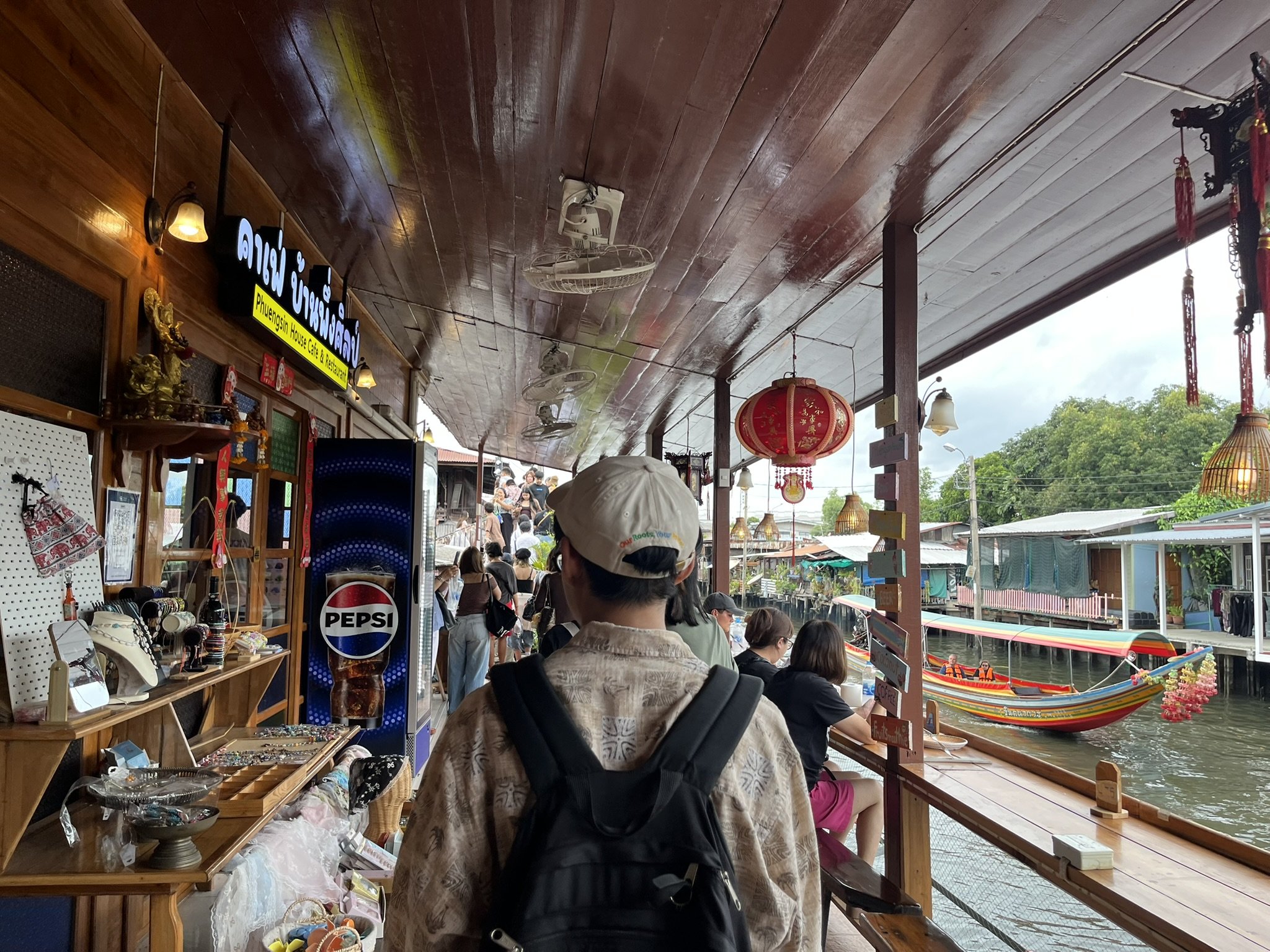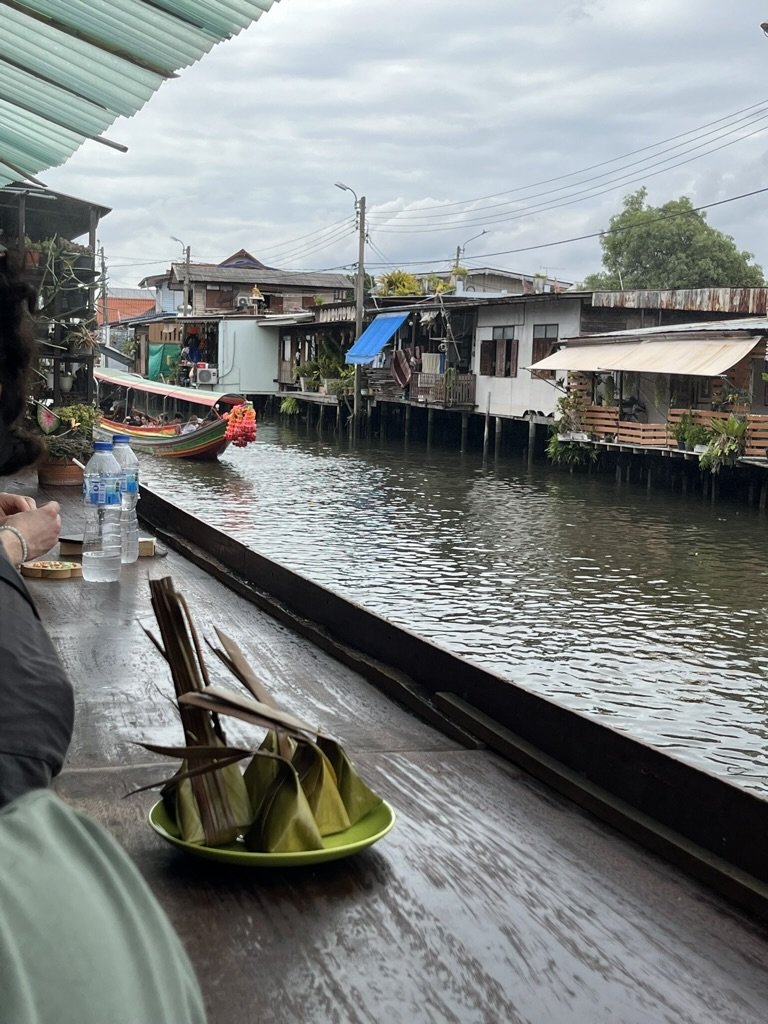Experience Review: Diving into the Reflection of Siamese Art and Culture Tour
If you’ve marveled at the Khon Dance at Sala Chalermkrung Royal Theatre after visiting the Grand Palace, you’ll be intrigued by another traditional Thai art form rooted in the same heroic tale, Ramakien. This tale is one of Thailand’s national legendary tales or epics and also a local adaptation of Indian Ramayana, Prince Rama’s exile and victory over the demon king Ravana, retold in a distinctly Thai context. The Ramakien has long served as a foundation for Thai art, literature, and performance, offering timeless themes of loyalty, love, and the triumph of good over evil.
Tucked along a canal in historic Bangkok, a troupe of young puppeteers brings these tales to life through intricately crafted puppets and graceful, synchronized movements, in this iconic performance art known as Hoon Lakhon Lek or Thai puppet theatre, which you will discover more about later in this blog and of course, if you join the tour!
In this little diary of the Reflection of Siamese Art and Culture tour, I share my experience as an intern here at the Roots Routes. Our journey started from Wat Kamphaeng Bangchak and concluded at the Artist House, all within the Khlong Bang Luang canal in Thonburi, Bangkok.
At first glance, these stops may seem unrelated. But as I discovered, they are deeply tied together through Siamese heritage, art, and community.
As you read on, you’ll realise there’s so much more to the Khlong Bang Luang community than just its trendy artistic vibes or the popularity of the Artist House. This canalside community, including Wat Kamphaeng Bangchak, has roots stretching back to the ancient Ayutthaya Kingdom period, dating back over 200 years, holding layers of cultural and historical significance. The tour not only brought me to these locations physically but also took me on a journey through time, revealing how art, history, and local life have always been intertwined here.
At Wat Kamphaeng Bangchak, we first experienced Hoon Lakhon Lek with a group of youths and their devoted teacher, Kru Ball. This Ayutthaya-era temple is home to Kru Ball and the Vayubut Youth Puppet Troupe, who practise their craft here every week. In this private workshop with them, I got to not only experience and learn how to perform but also go through the history behind the troupe and this mesmerising performance art, which dates back to 1901, when Thailand was known as Siam. The intricate design and craftsmanship of each puppet reflect the elegance of traditional Siamese art and the cultural richness of the era in which it was born.
For decades, these performances flourished and delighted audiences with their artistry and storytelling. But in recent years, this cultural treasure has started to fade from the performance art scene, especially as modern entertainment took over. For years, there are only a few remaining puppet theatre masters left to transmit this intricate performance art, making it rare. It is also rare to find younger generations willing to take on this demanding performance art, which requires years of meticulous training. Each puppet is so complex that it takes three skilled performers working in perfect harmony to bring it to life. With this complexity, endurance training is needed and the youth must first master the Khon dance, a Thai classical masked dance, before taking on puppet performance. The guide even mentioned that it can take up to 6 years to learn the Khon dance! That is what makes the Vayubut Puppet troupe and Kru Ball so remarkable. At a time when very few young people are willing to commit to such demanding training, he has been tirelessly mentoring devoted local youth, passing down techniques that might otherwise be lost. If you would like to know more, watch this video that sheds light on the Vayubut Puppet troupe’s dedication through this link!
By joining this tour, you’re not only witnessing a rare and beautiful tradition, you’re also actively helping to preserve it. It helps to support the dedicated troupe and the next generation of young puppeteers, who are working passionately to keep this unique form of Siamese heritage alive. A part of the monetary support also goes directly to funding the troupe’s activities and the education of the young puppeteers, many of whom come from modest backgrounds.
After the workshop, we made our way to the nearby Artist House, watching boats glide by while enjoying traditional Thai snacks and admiring the variety of crafting materials. While it's now a popular cultural stop, few know the deeper story behind this stilted wooden house and its surroundings. The Khlong Bang Luang community never used to be this vibrant art space it is today. The community was once a thriving market and market district, until roads became a more common way of transportation compared to waterways, and people started to move out to newer and modern accommodations. The wooden stilt houses slowly started to be dilapidated as the community grew quiet and many homes fell into disrepair.
The turning point came in 2007, when artist Chumpol Akkapantanon bought a dilapidated two-story wooden teak house from an old goldsmith family, and transformed it into the Artist House. He revived the space and even hosted Hoon Lakhon Lek performances in its early years. His goal was to reconnect the community with its canal-side heritage and rich history of the old community, while inspiring locals to preserve their culture. And it worked. The once-quiet canal came back to life, as nearby homes followed suit in restoring their historic charm.
What fascinated me even more was learning that Khlong Bang Luang’s full name is Khlong Bang Kha Luang, meaning royal officers’ residence. This was once the home of noblemen, particularly Chinese officials under King Taksin. Inside the house, there is an old stupa (chedi) in the middle, which was once part of the nearby Wat Kamphaeng Bangchak. This showcases the historic depth of this area, with the chedi dating back from the late Ayutthaya Kingdom period. Thus, Khlong Bang Luang is such a historic gem as we get to have a glimpse into the past through these old canalside houses and temples.
From the puppet stage at Wat Kamphaeng Bangchak to the revived charm of the Artist House, this experience showed me that Siamese art, culture, and history transcends through time, owing to the passionate people who keep its traditions. The prominence and richness of Siamese history, art, and culture truly comes to life, especially when you get to experience and understand it for yourself. Getting a hands-on glimpse into Hoon Lakhon Lek was not only fun but also surprisingly challenging as it takes good coordination! Learning just a small part gave me a deep appreciation for the passion and precision behind every performance. So if you’re ready to experience it yourself and see a different side of Bangkok, do not miss this exclusive cultural journey at this link!






